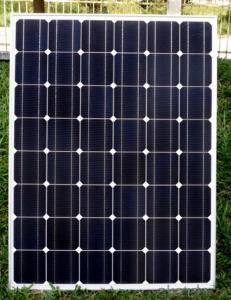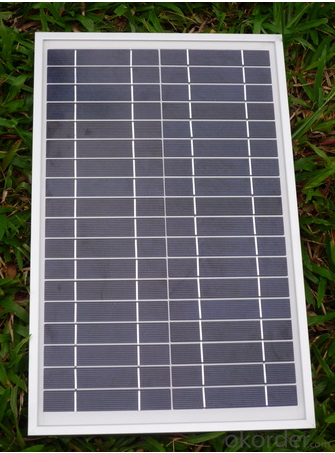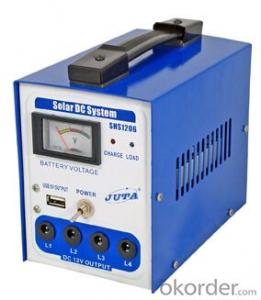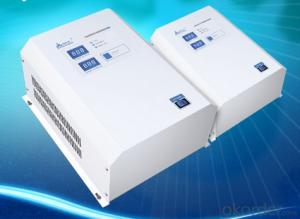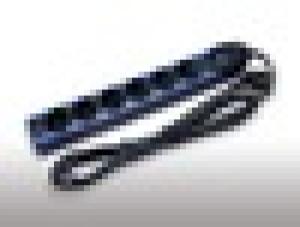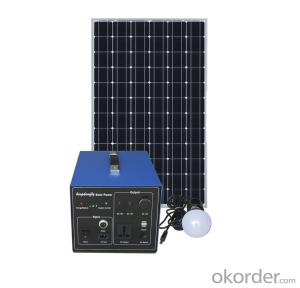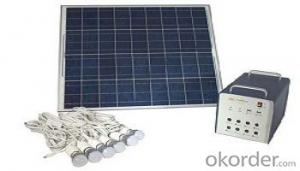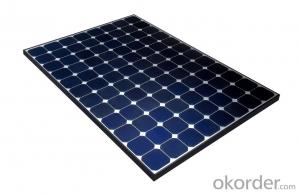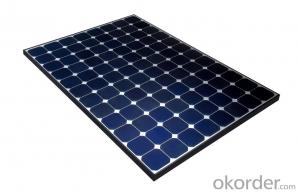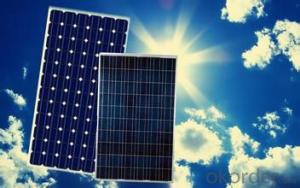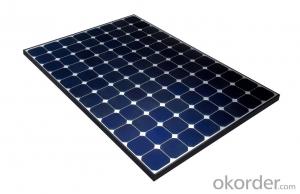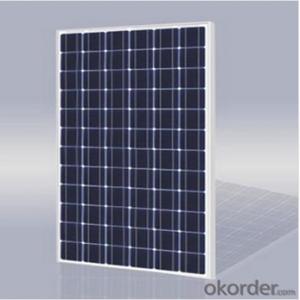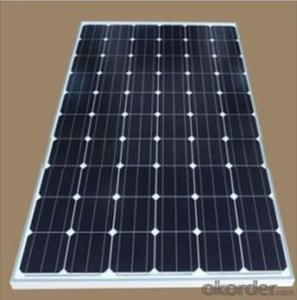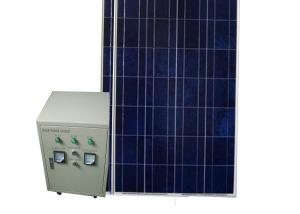400kw CNBM Monocrystalline Silicon Solar Energy Systems SES Panel for Home Use
- Loading Port:
- Shekou
- Payment Terms:
- TT OR LC
- Min Order Qty:
- 100 watt
- Supply Capability:
- 1000 watt/month
OKorder Service Pledge
OKorder Financial Service
You Might Also Like
Specification
400KW CNBM Monocrystalline Silicon Panel for Home Using
Production description
Solar power is the conversion of sunlight into electricity, either directly using photovoltaics (PV), or indirectly using concentrated solar power (CSP). Concentrated solar power systems use lenses or mirrors and tracking systems to focus a large area of sunlight into a small beam. Photovoltaics convert light into anelectric current using the photovoltaic effect.[1]
The International Energy Agency projected in 2014 that under its "high renewables" scenario, by 2050, solar photovoltaics and concentrated solar power would contribute about 16 and 11 percent, respectively, of theworldwide electricity consumption, and solar would be the world's largest source of electricity. Most solar installations would be in China and India.[2]
Solar energy is radiant light and heat from the Sun harnessed using a range of ever-evolving technologies such assolar heating, photovoltaics, solar thermal energy, solar architecture and artificial photosynthesis.
It is an important source of renewable energy and its technologies are broadly characterized as either passive solar oractive solar depending on the way they capture and distribute solar energy or convert it into solar power. Active solar techniques include the use of photovoltaic systems,
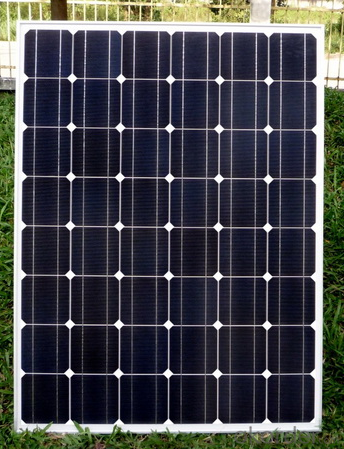
Feature
1.High conversion efficiencies resulting in superior power output performance.
2.Outstanding power output even in low light or high temperature conditions
3.Optimized design for ease of soldering and lamination
Physical characteristic
1. Rigorous quality control meets the highest international standards.
2. High-transmissivity low-iron tempered glass, strong aluminium frame.
3. Using UV-resistant silicon.
4. IS09001/14001/CE/TUV/UL
packaging
26pcs in one carton 6pallets in 20foot container 14pallets in 40 foot container.
- Q: Can a solar energy system be installed in a residential community with homeowners' association rules?
- Yes, a solar energy system can be installed in a residential community with homeowners' association rules. However, it is important to review the specific guidelines and regulations set by the homeowners' association (HOA) regarding the installation of solar panels. Some HOAs may have certain restrictions or requirements in terms of the design, location, and appearance of the solar panels to maintain the aesthetic appeal of the community. It is advisable to consult with the HOA board and possibly seek their approval before proceeding with the installation.
- Q: Can solar energy systems be used in areas with high levels of electromagnetic radiation?
- Yes, solar energy systems can be used in areas with high levels of electromagnetic radiation. Solar panels convert sunlight into electricity by utilizing the photovoltaic effect, which is not affected by electromagnetic radiation. However, it is important to note that excessive electromagnetic radiation may cause interference with the electrical components of the solar system, potentially reducing its efficiency. Therefore, proper shielding and grounding measures are crucial to protect the system from any potential damage or interference. Additionally, it is advisable to conduct a thorough site assessment and consult with experts to ensure that the solar energy system can operate optimally in areas with high levels of electromagnetic radiation.
- Q: What is the role of maximum power point tracking (MPPT) in a solar energy system?
- The role of maximum power point tracking (MPPT) in a solar energy system is to optimize the efficiency and output of the system by continuously tracking and adjusting the operating point of the solar panels to maximize their power output. By ensuring that the solar panels operate at their maximum power point, MPPT enables the system to harvest the maximum amount of energy from the sunlight, resulting in increased overall system performance and improved energy production.
- Q: Can a solar energy system be installed on any type of roof?
- Solar energy systems can be installed on any type of roof, be it flat, sloped, metal, shingle, or tile. Options for solar installation are available for each type of roof, though the installation process may differ depending on the roof type. For instance, flat roofs may necessitate mounting systems that tilt the solar panels for optimal sun exposure, whereas sloped roofs may require adjustable racking systems to ensure proper alignment. Moreover, before installation, it is essential to assess the condition and structural integrity of the roof to ascertain its ability to support the weight of the solar panels. In conclusion, while the methods for installation may vary, solar energy systems can indeed be installed on any roof type.
- Q: Can solar energy systems be used in areas with high levels of wildlife activity?
- Yes, solar energy systems can be used in areas with high levels of wildlife activity. However, proper measures should be taken to minimize any potential negative impacts on wildlife. This can include designing and installing systems that are bird-friendly, using wildlife-friendly fencing, and ensuring that the installation site does not disrupt important wildlife habitats or migration routes. Additionally, regular monitoring and maintenance can help identify and address any issues that may arise to ensure the coexistence of solar energy systems and wildlife.
- Q: How does a solar energy system connect to the electrical grid?
- Through the process of net metering, a solar energy system is able to connect to the electrical grid. Net metering grants credits to the owners of solar energy systems for the surplus electricity they produce and transmit back to the grid. The sunlight is converted into direct current (DC) electricity by the solar panels in the solar energy system. This DC electricity is then transformed into alternating current (AC) electricity by an inverter, making it compatible with the electrical grid. The AC electricity is subsequently directed to the primary electrical panel of the building or residence, where it can be utilized to power electrical appliances and devices within the premises. In the event that the solar energy system generates more electricity than is required at a given time, the excess electricity is sent back to the grid through a meter that measures electricity flow in both directions. This bidirectional meter records the electricity consumed from the grid and the excess electricity returned to the grid. The surplus electricity is credited to the account of the solar energy system owner, resulting in the meter effectively spinning backwards. These credits can be used to offset the electricity consumed from the grid during periods when the solar panels are unable to generate sufficient electricity, such as during nighttime or on cloudy days. By connecting to the electrical grid, a solar energy system secures a dependable and uninterrupted supply of electricity. Additionally, it allows the system owner to reap financial benefits by reducing their electricity bills and potentially earning income from the excess electricity sent back to the grid.
- Q: Can solar energy systems be used for powering healthcare facilities?
- Yes, solar energy systems can be used to power healthcare facilities. Solar panels can be installed on the roofs or open spaces of healthcare facilities to generate clean and renewable electricity. This can help reduce dependence on fossil fuels and lower energy costs for the healthcare facility. Solar energy systems can power various equipment, including medical devices, lighting, heating, cooling, and ventilation systems, ensuring uninterrupted and sustainable energy supply for critical healthcare services.
- Q: Can solar energy systems be connected to the existing power grid?
- Solar energy systems can indeed be linked to the current power grid, known as grid-tied or grid-connected solar systems. In this configuration, solar panels harness sunlight to generate electricity, which is then converted by inverters into usable AC power. This AC power is then integrated into the existing power grid, effectively supplementing the utility company's electricity supply. Grid-tied solar systems provide multiple advantages. Primarily, they allow homeowners and businesses to decrease their dependence on fossil fuel-based electricity and reduce their carbon footprint. Moreover, any surplus electricity generated by the solar panels can be returned to the grid, resulting in net metering or feed-in tariffs. In this scenario, the excess power is credited to the system owner by the utility company, leading to substantial cost savings or even potential revenue generation. Furthermore, grid-tied systems ensure a reliable and consistent supply of electricity. During periods when the solar panels are unable to generate sufficient power, such as at night or during cloudy weather, electricity can be acquired from the grid. Conversely, when the panels produce more electricity than is being utilized, the surplus is sent back to the grid, guaranteeing an uninterrupted and continuous power supply. It is important to acknowledge that the installation and connection of grid-tied solar systems may necessitate the approval and coordination of the local utility company, as well as adherence to pertinent regulations and safety standards. Nevertheless, the capability to connect solar energy systems to the existing power grid renders them a versatile and advantageous renewable energy solution.
- Q: Can solar energy systems be installed in areas with high snowfall?
- Yes, solar energy systems can be installed in areas with high snowfall. While snow can temporarily reduce the efficiency of solar panels by covering them, it is still possible to generate electricity from solar energy during winter months. Additionally, advancements in technology have led to the development of snow-shedding designs and tilt systems that can help minimize snow accumulation on panels. Regular maintenance and cleaning can further optimize the system's performance in snowy conditions.
- Q: How do solar energy systems impact energy independence?
- Solar energy systems can greatly impact energy independence by reducing reliance on traditional energy sources such as fossil fuels. By harnessing the power of the sun, solar energy systems provide a clean and renewable source of electricity. This reduces the need to import energy from other countries, enhancing a nation's energy independence. Additionally, solar energy systems can be installed at individual homes and businesses, allowing individuals to generate their own electricity and become less dependent on the grid. Overall, solar energy systems play a crucial role in promoting energy independence and reducing the carbon footprint.
Send your message to us
400kw CNBM Monocrystalline Silicon Solar Energy Systems SES Panel for Home Use
- Loading Port:
- Shekou
- Payment Terms:
- TT OR LC
- Min Order Qty:
- 100 watt
- Supply Capability:
- 1000 watt/month
OKorder Service Pledge
OKorder Financial Service
Similar products
Hot products
Hot Searches
Related keywords
